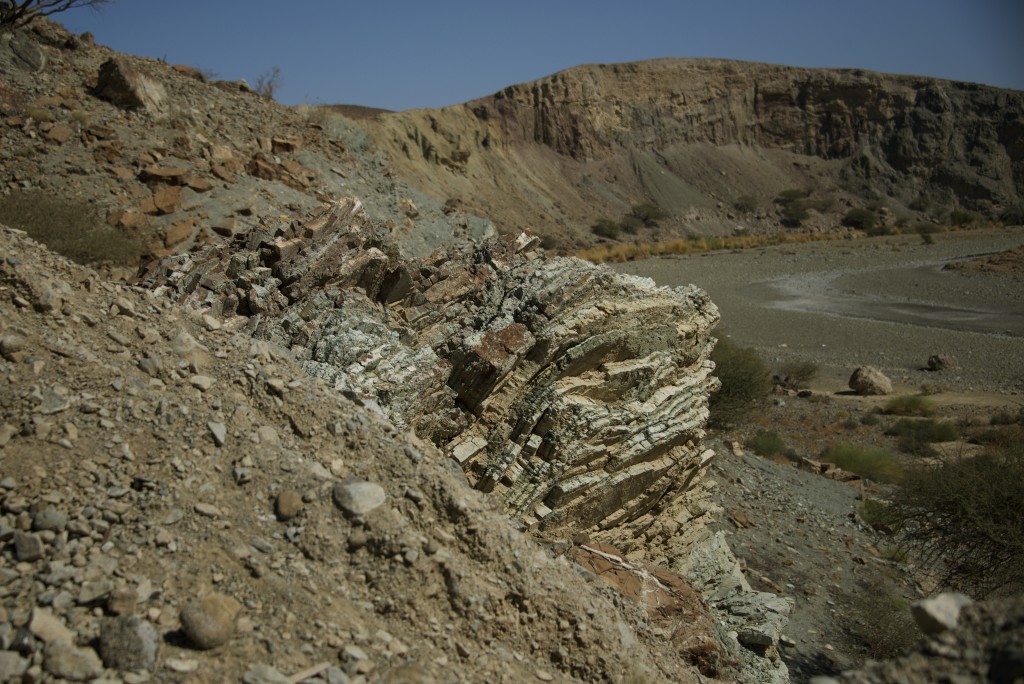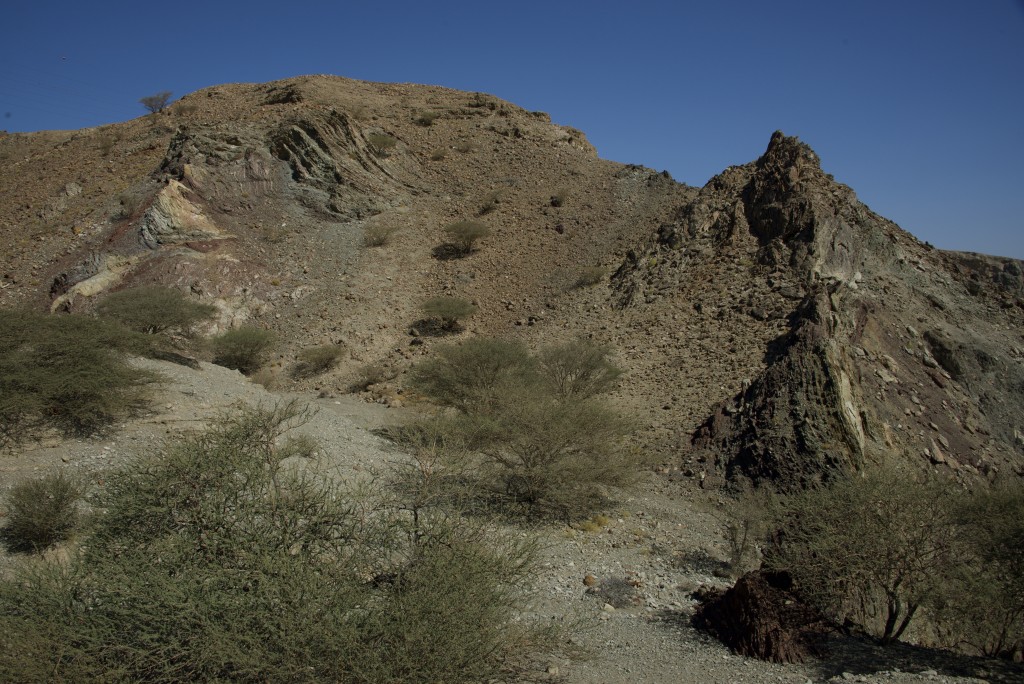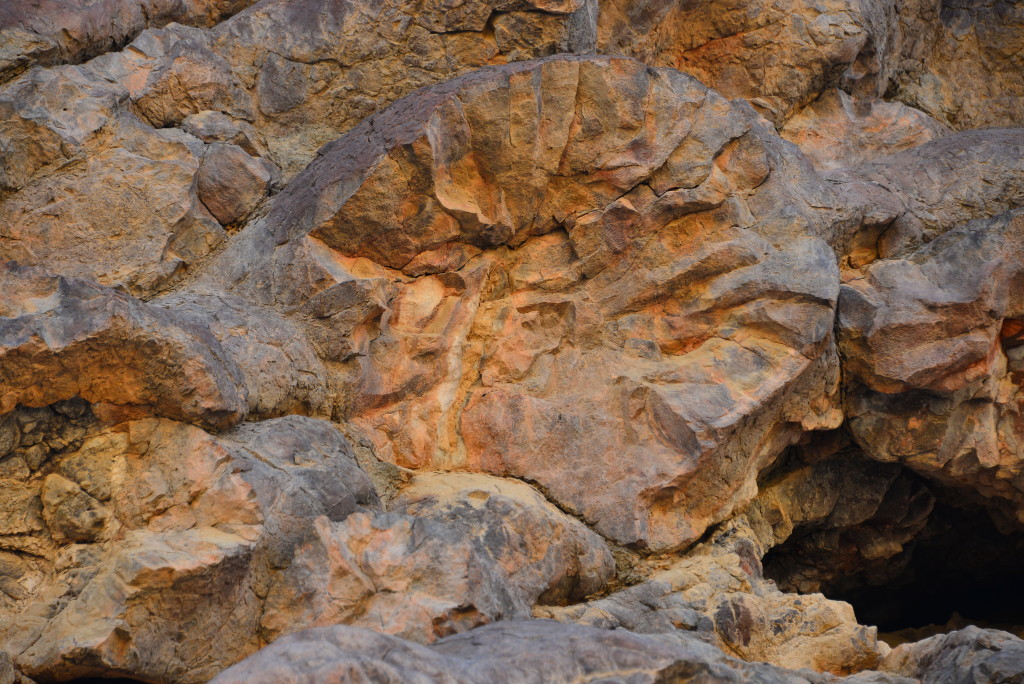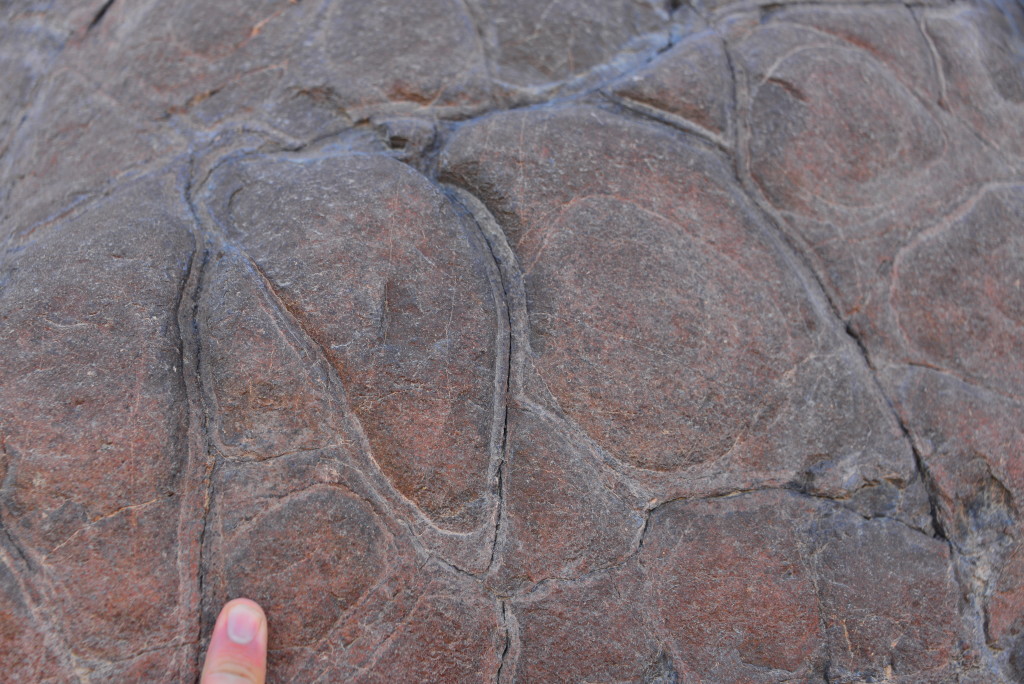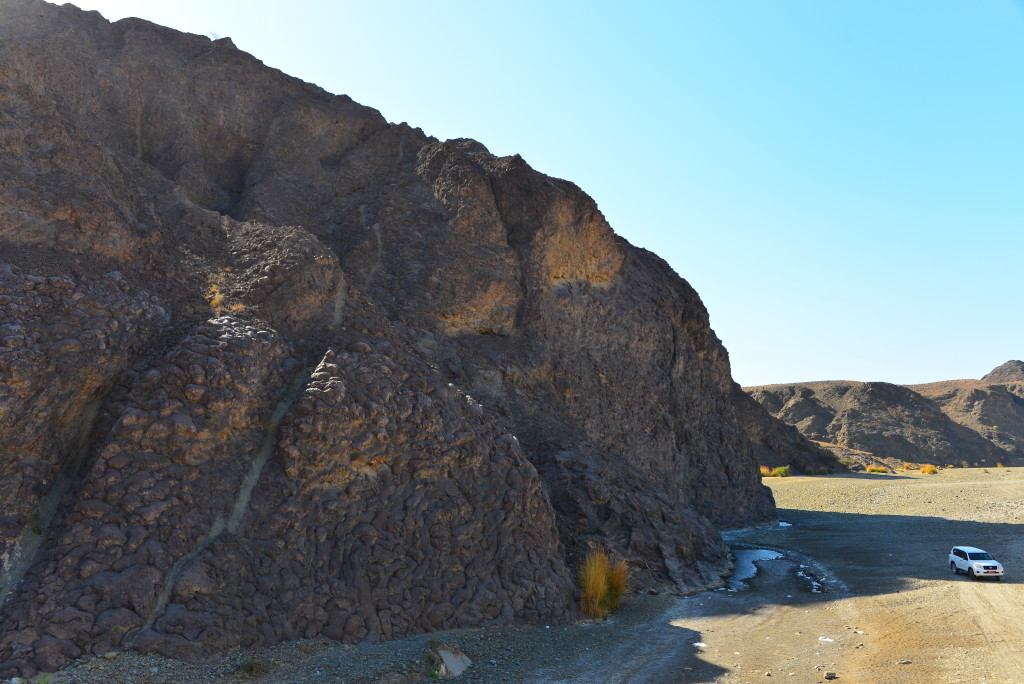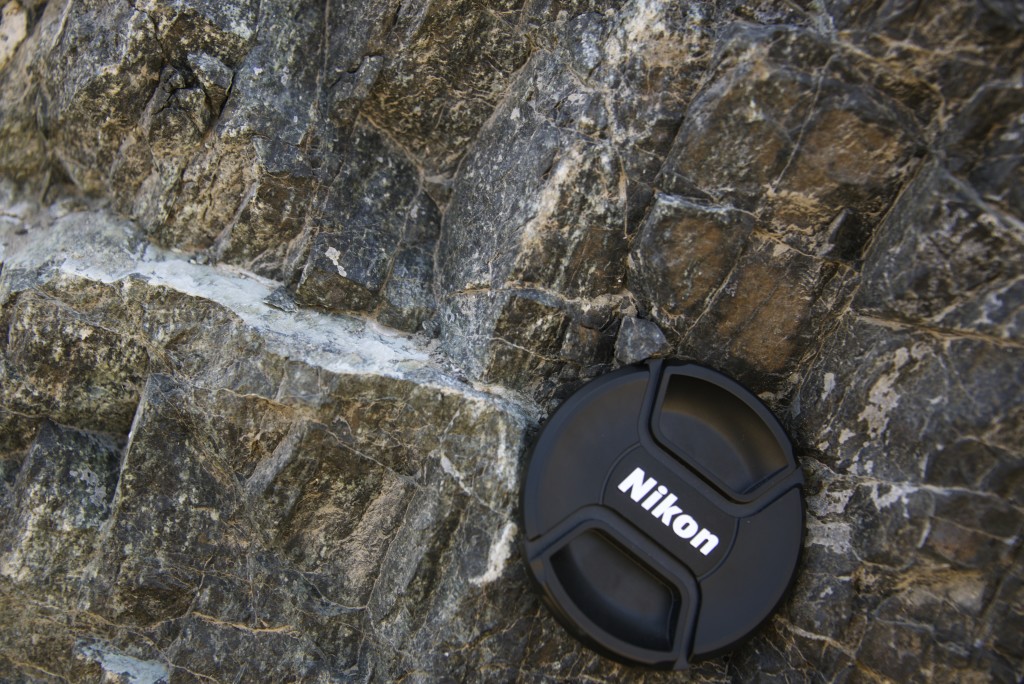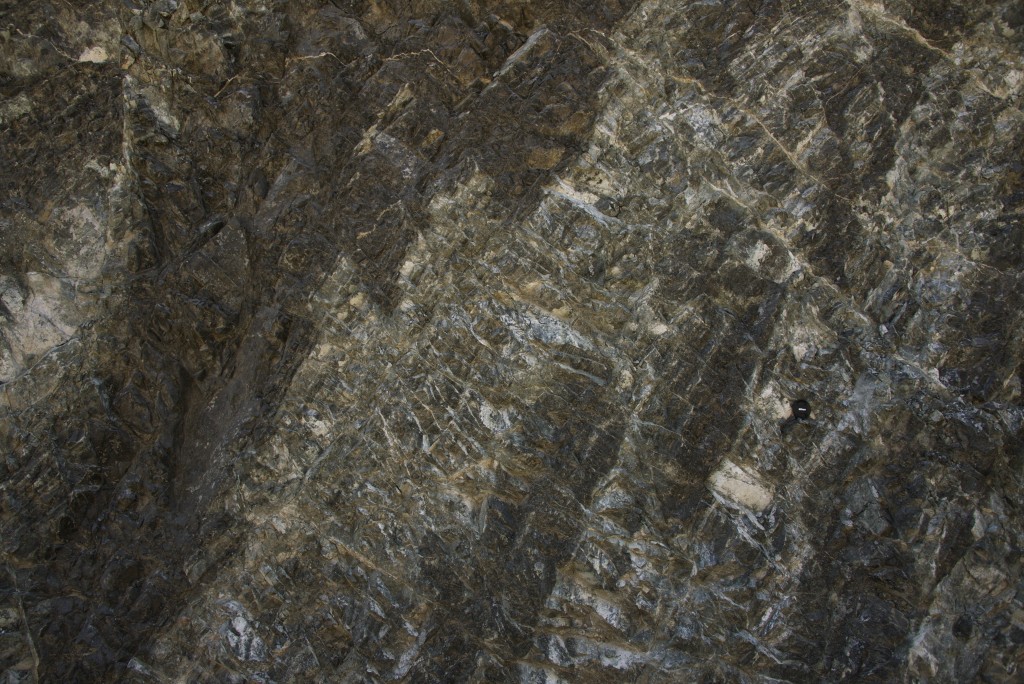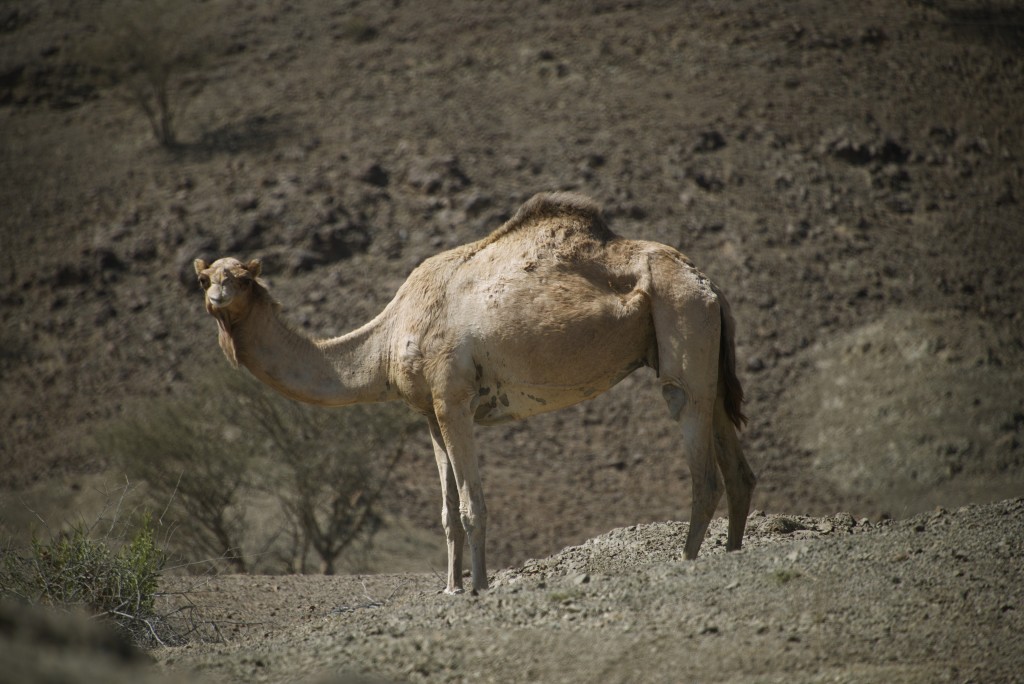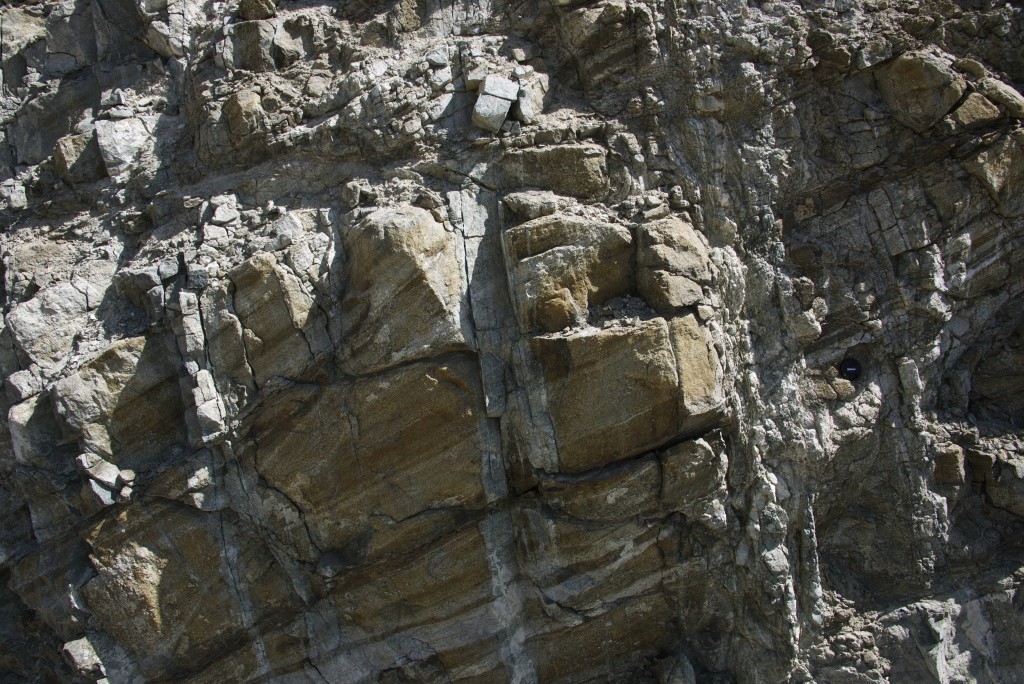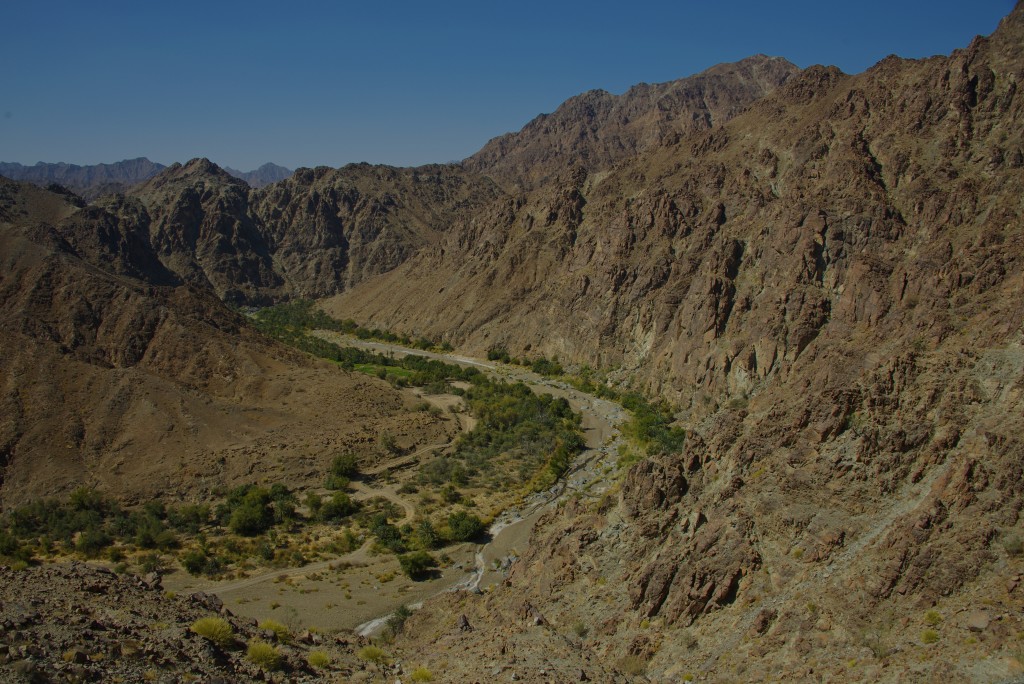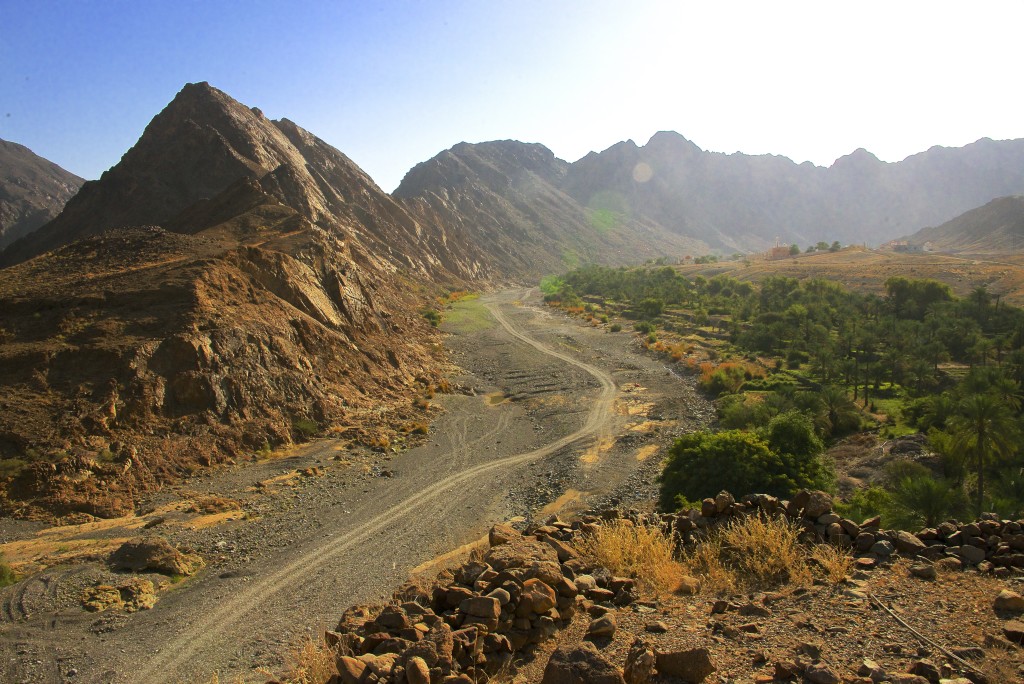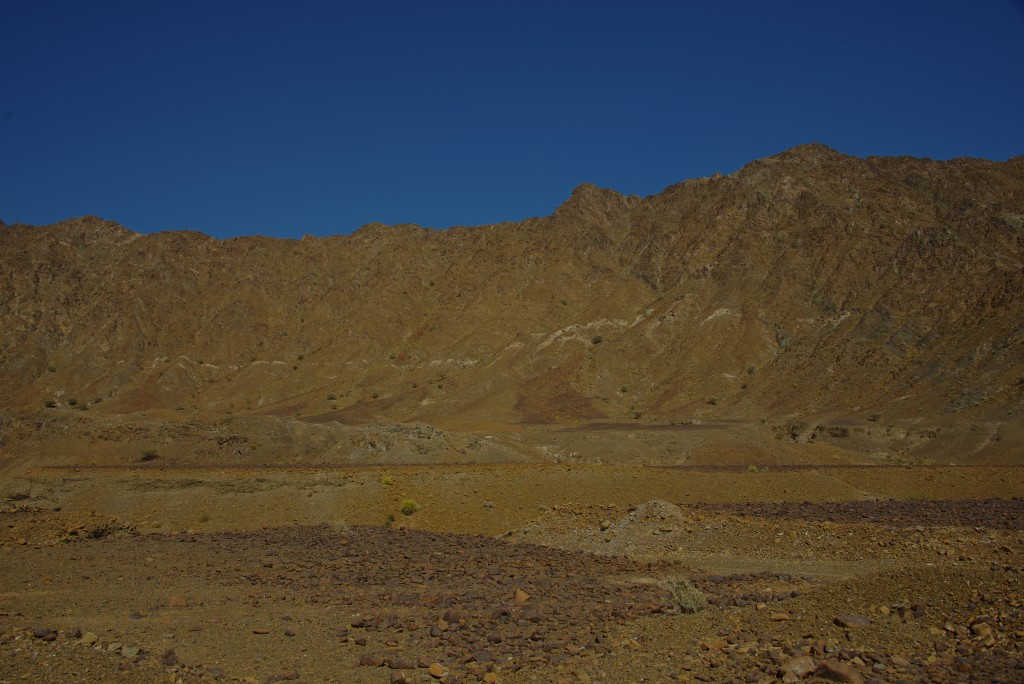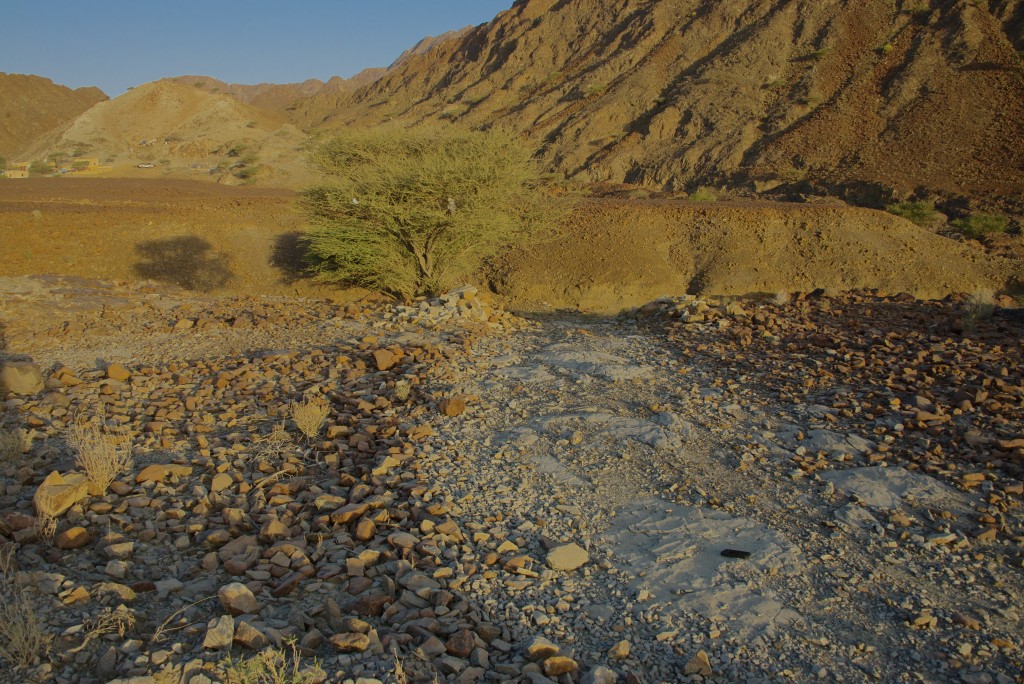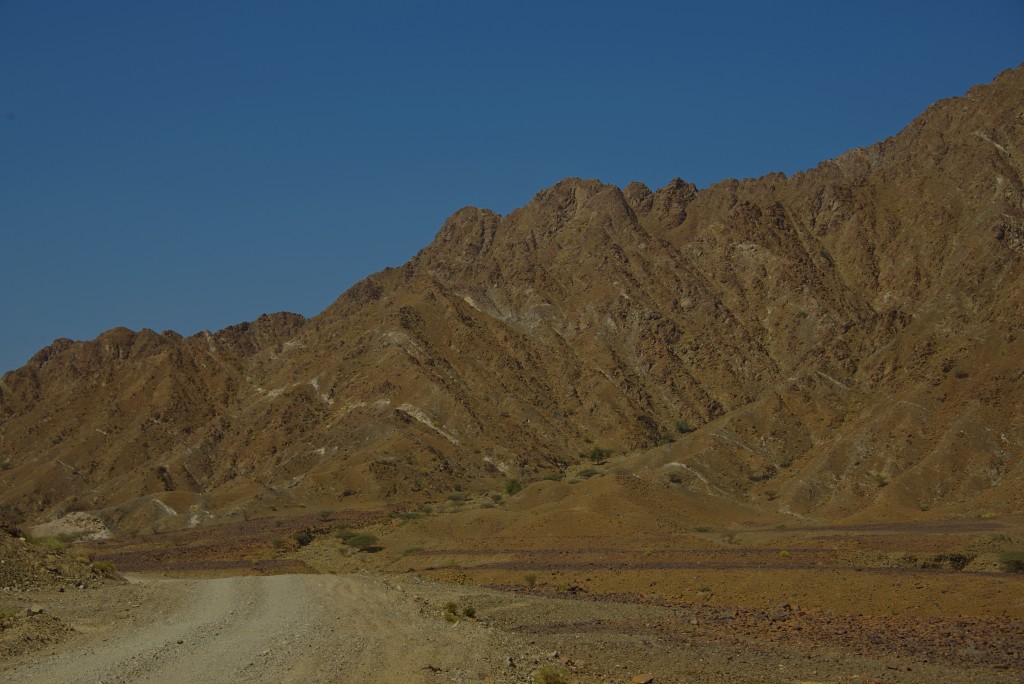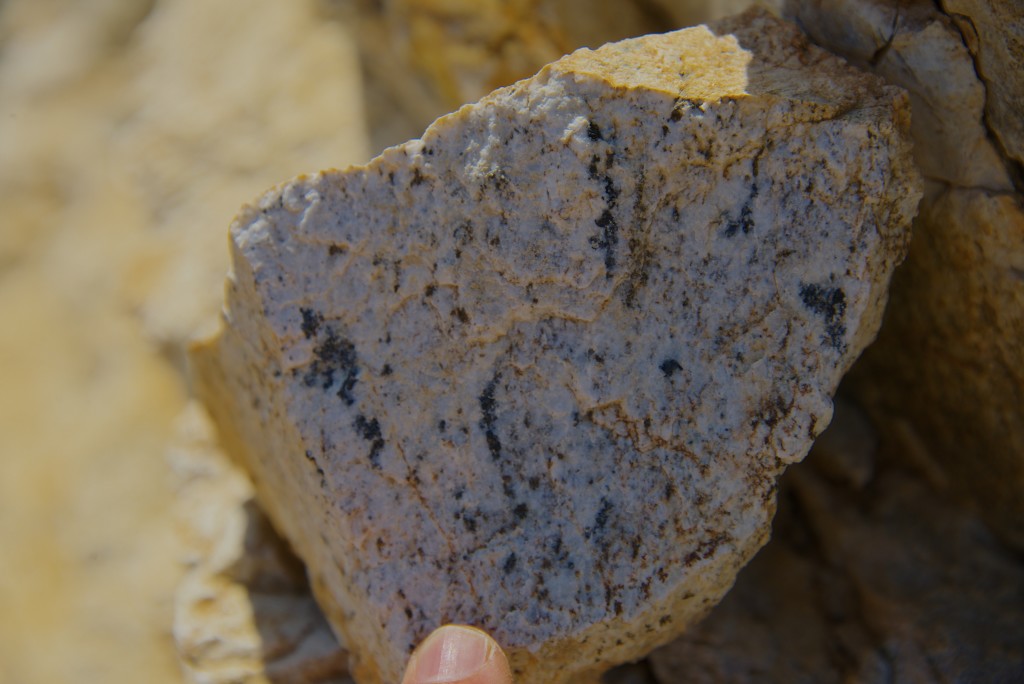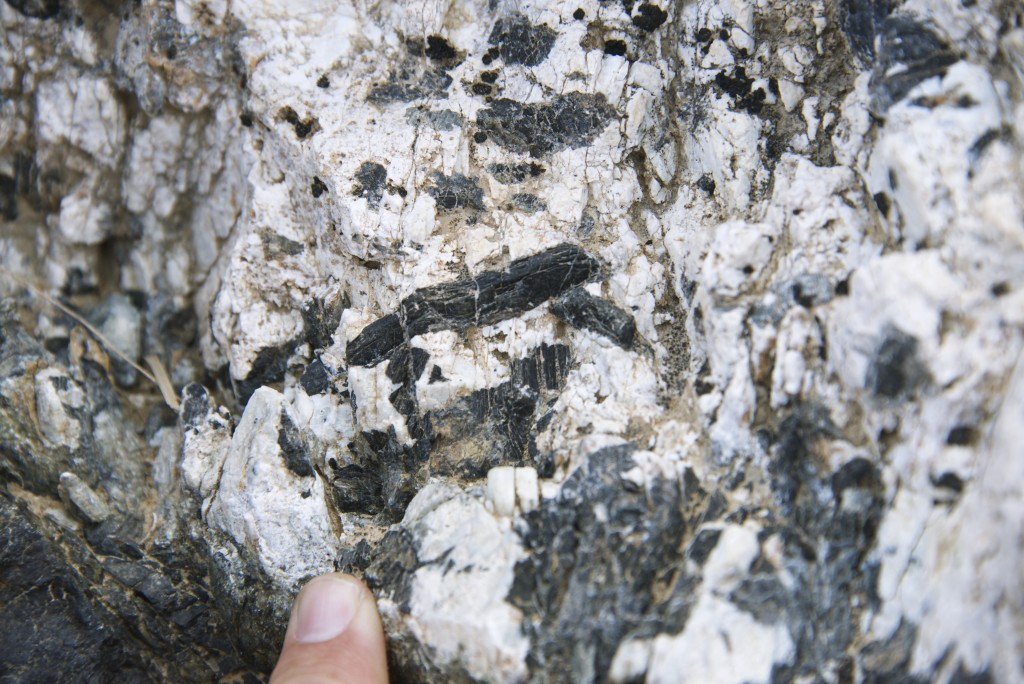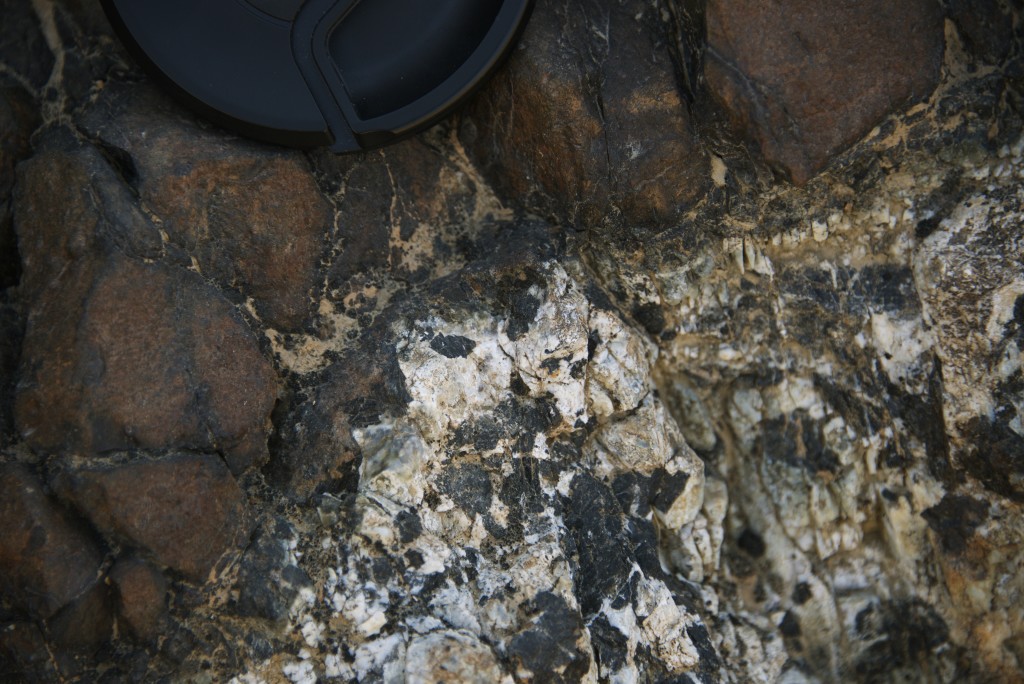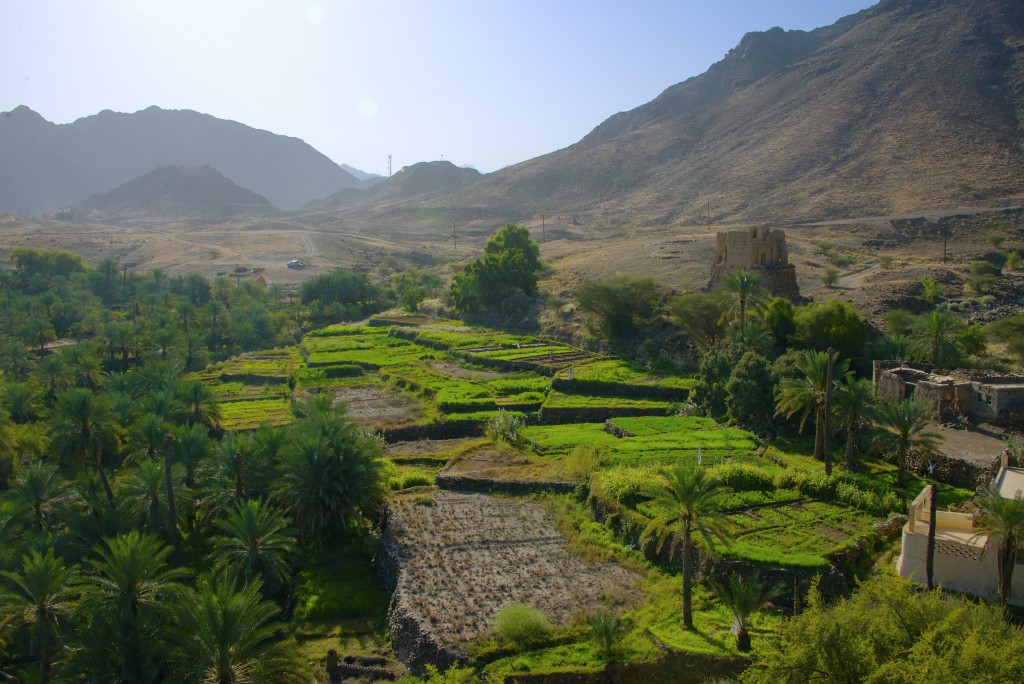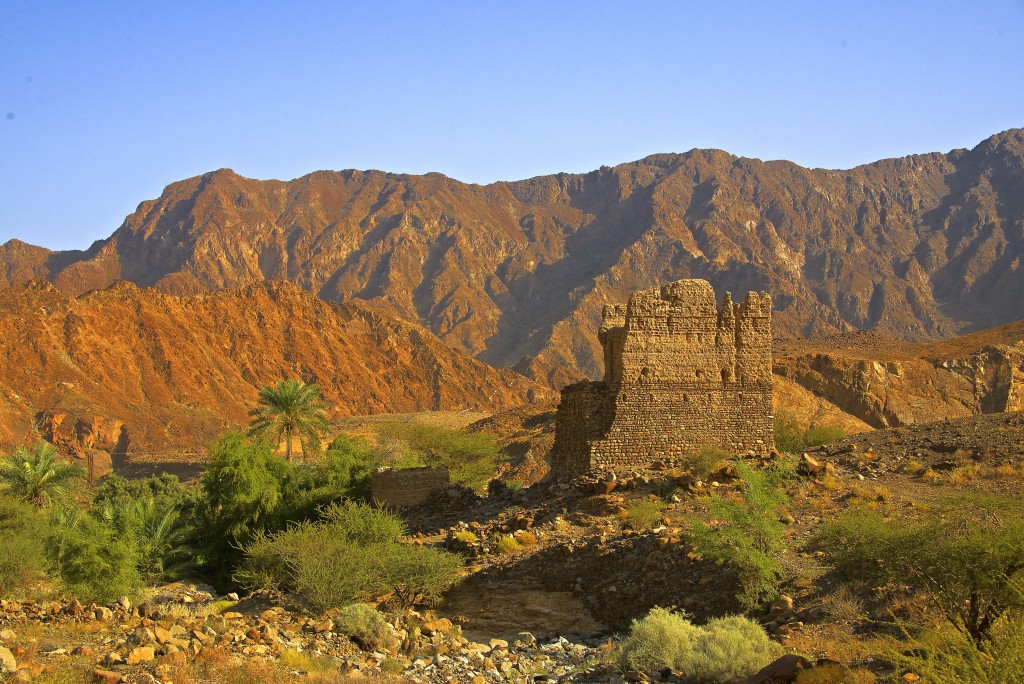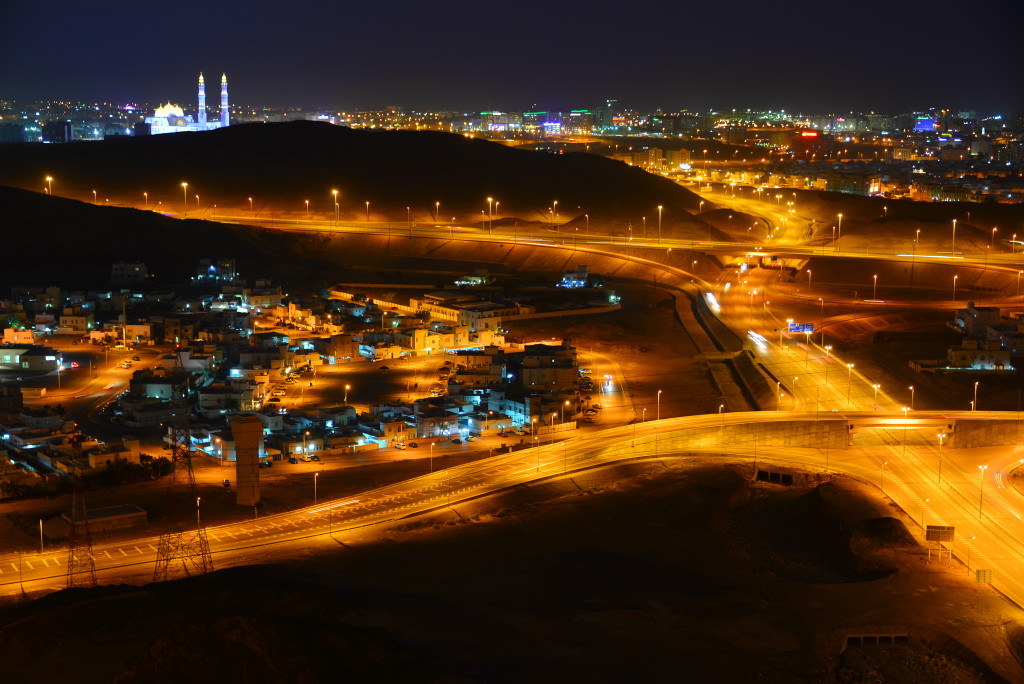For the geologist, there are some places on planet Earth that are sacred. Not sacred in supernatural or mystical, but sacred in the impact they have had for our understanding of the Earth system. Of course, each geologist will regard various site with differing amounts of reverence depending on interests and specialty. From my initial formal exposure to geology, the Semail Ophiolite of Oman/UAE was particularly significant. My high school geology teacher who was a former exploration geologist for Esso regaled us of adventure stories in the Rub’ al Khali and Semail ophiolite. The idea that ocean crust could be obducted on the continent seemed so far-fetched to my high school mind. It seemed to contradict everything I had been taught concerning subduction and plate buoyancy, for how could a complete intact section of oceanic crust be preserved on continental crust when the density of not just the basaltic crust but also the harzburgitic mantle are so much greater than the continental margin. Of course, at the time I did not understand the intricacies of back-arc spreading and supra-subduction ophiolites. Despite the gaps in my understanding, I was nonetheless amazed to hear of an intact cross section of oceanic crust beautifully preserved in the Semail Ophiolite. To this day, we have yet to observe an intact sequence of oceanic crust anywhere else than in ophiolites. For over 50 years, drilling projects have tried to pierce through the entire oceanic crustal section into the mantle and none have succeeded. The deepest ocean drilling project has reached into the layered gabbros but never reached the Moho.
The following year when I began my undergraduate education majoring in geology, I remember seeing my high school geology teacher, Gene Clark pictured in my introductory textbook examining the pillow basalts of Wadi Jizzi and the sheeted dykes of Wadi Hawasina. I thought, “This is the life I wish to lead.”
My exposure to and the importance of the Semail Ophiolite continued to grow as my next geo-mentor, Ron Harris, also spent a great deal of time exploring the ophiolite in Oman with specific emphasis on the baked underbelly of ophiolitic sequence — the metamorphic sole. Ron also lived a life of adventure, spending months at a time in the jungles of Indonesia and high in the mountains of Alaska. It was from Ron that I finally grew to learn the tectonic mechanisms behind ophiolite obduction and the geochemical proxies that support the supra-subduction model.
Over the next five years, I had the opportunity to visit three ophiolites: the Shyok in the Himalaya, Zermatt-Saas in the Alps, and Ballantrae in Scotland. Each of these was spectacular in their own right. The Shyok ophiolite was in the Himalaya, need I say more? The scale as with all things in the world’s largest mountain belt was immense, but the sequence is obscured by 50 million years of collisional orogenesis (not strictly true, pardon my dramatization). My experience with Zermatt-Saas was similar. With so much tectonization, the ophiolite was significantly dismembered. The Ballantrae, oh the Ballantrae. Quite possibly the smallest ophiolite in the world. Possibly not even an ophiolite, just a few basalt pillows and some serpentinite on the Scottish Coast.
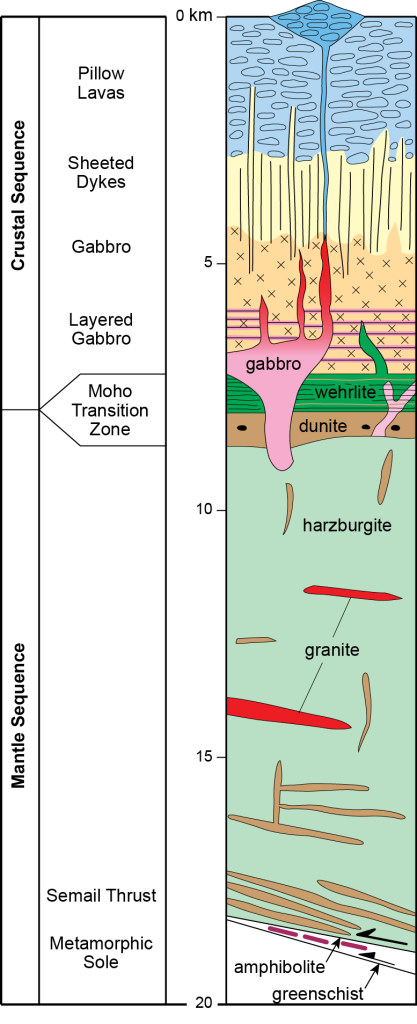
Schematic model of the Semail Ophiolite showing the major lithological units (after Searle et al., 2014).
None of these compare to the Semail Ophiolite. I had the opportunity to visit the Semail Ophiolite in Oman and UAE a few weeks ago, just a few days after Mike Searle posted an article on TravelingGeologist on the same. This experience was everything I thought it would be. Like Disneyland for a geologist. My first thought was, this is too simple, too neat. Everything lay exactly where the cartoon ocean crust models said it should. It was Alexandre Brongniart who coined the term “ophiolite” after the greek ophis (serpent). This term was originally used in 1813 to describe serpentinites in mélanges which he redefined in 1821 to a suite of magmatic rocks (peridotite, gabbro, diabase, and volcanic rocks). These ideas were furthered by Gustav Steinmann who recognized that in the Apennine ophiolites, this comagmatic igneous sequence was associated with deep-marine sedimentary successions and were found on the tops of mountains due to the emplacement of massive thrust sheets which subsequently used to differentiate allochthonous nappe sequences in the Alps and Apennine orogenies.
There were many who discussed the origin and history of ophiolites, many of which are considered true luminaries in the field of Earth Science (e.g. Norman Bowen — of Bowen’s reaction series, Harry Hess — one of the fathers of modern plate tectonics). However, it was not until the mid-1960’s when the unifying theory of plate tectonics came on the scene when the true origin and varieties of ophiolites came in focus. Much of the how an ophiolite is defined today was discussed at the 1972 Penrose Field Conference. At this conference, the experts in ophiolite science came to the following consensus that is typified by the Semail Ophiolite.
Ophiolite refers to a distinctive assemblage of mafic to ultramafic rocks. It should not be used as a rock name or as a litholigic unit in mapping. In a completely developed ophiolite, the rock types occur in the following sequence, starting from the bottom and working up:
- Ultramafic complex, consisting of variable propotions of harzburgite, lherzolite and dunite, usually with a metamorphic tectonic fabric (more or less serpentinized);
- Gabbroic complex, ordinarily with cumulus textures commonly containing cumulus peridotites and pyroxeneite and usually less deformed than the ultramafic complex;
- Mafic sheeted dike complex;
- Mafic volcanic complex, commonly pillowed.
- Associated rocks types include (1) an overlying sedimentary section typically including ribbon cherts, thin scale interbeds, and minor limestones; (2) podiform bodies of chromite generally associated with dunite; and (3) sodic felsic intrusive and extrusive rocks.
Faulted contacts between mappable units are common. Whole sections may be missing. An ophiolite may be incomplete, dismembered, or metamorphosed ophiolite. Although ophiolite generally is interpreted to be oceanic crust and upper mantle, the use of the term should be independent of its suppose origin (Anonymous, 1972).
Ophiolite research continues to move forward. There are several proponents for different types of ophiolites including Ligurian, Mediterranean, Sierran, Chilean, Macquarie, Caribbean, and Franciscan. There are those who firmly believe ophiolites like that of the Semail were formed at mid-ocean ridges, whereas others contend they form in backarc (supra-subduction) settings. Since the 1972 Penrose conference, our understanding of oceanic crustal growth has revealed much greater complexity than previously supposed. The results from numerous ocean drilling programs over the past three decades have challenged the Penrose ophiolite model in which the entire oceanic crust is uniform in architecture and thickness. Bach and Früh-Green (2010) point out some of the fundamental differences in oceanic crust formation are related to spreading rates. They go on to state that,
“the Penrose model is generally applicable for crust formed at fast-spreading ridges, such as the East Pacific Rise, where melt supply is able to keep up with extension at the divergent plate boundary… However, it cannot be applied to much of the crust formed at oceanic ridges spreading at less than 40 mm y−1. This type of ridge comprises nearly 50% of the global mid-ocean ridge system and extends from the Arctic Ocean, along the entire Mid-Atlantic Ridge and into the Indian Ocean.”

Conceptual models of ocean crust associated with differences in spreading rates from Bach and Früh-Green, (2010).
Much of the current research is focused on constraining the timing of ophiolite magmatism and obduction, understanding the chemistry that governs the models for petrogenesis and identifying the metamorphic conditions of the metamorphic sole.
Here are some recent seminal papers on the Semail ophiolite:
Here are some photos from my recent excursion.
Starting at the top of the ophiolite and working down we first see:

The classic ‘Geotimes’ pillow basalt outcrop in Wadi Jizzi. I almost drove right past it and then saw it out of the corner of my eye and just about crashed my SUV! As I got out of the car, I just stood and stared for several minutes absorbing the tremendous scale and pristine exposure. No where else in the world even comes close!
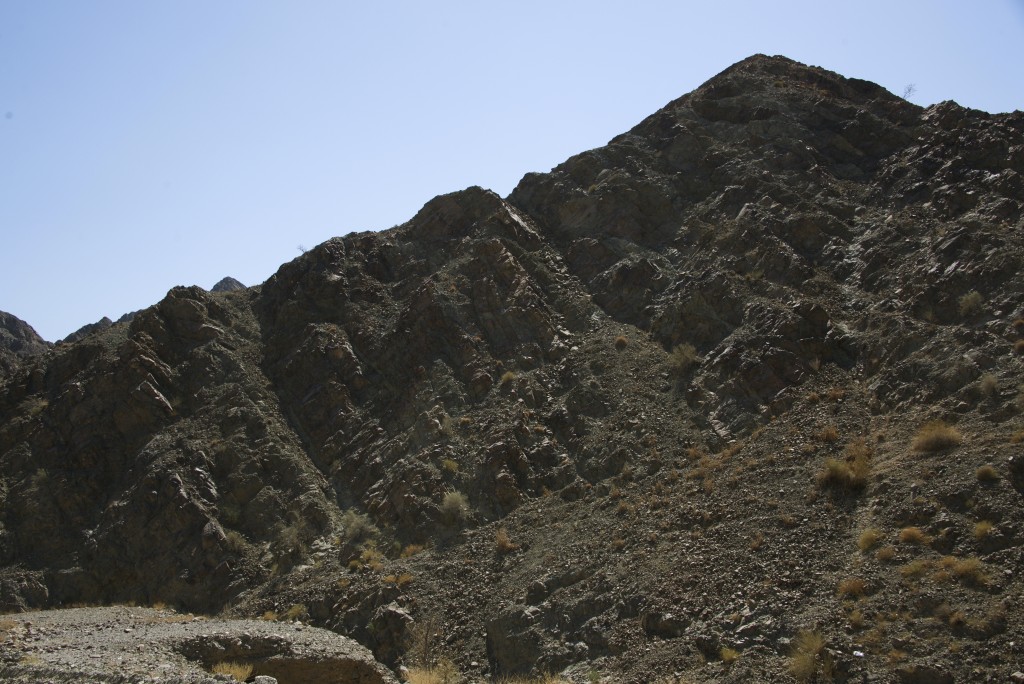
Beneath the pillow basalts are the sheeted dykes, some of which preserve one- or two- sided chilled margins…
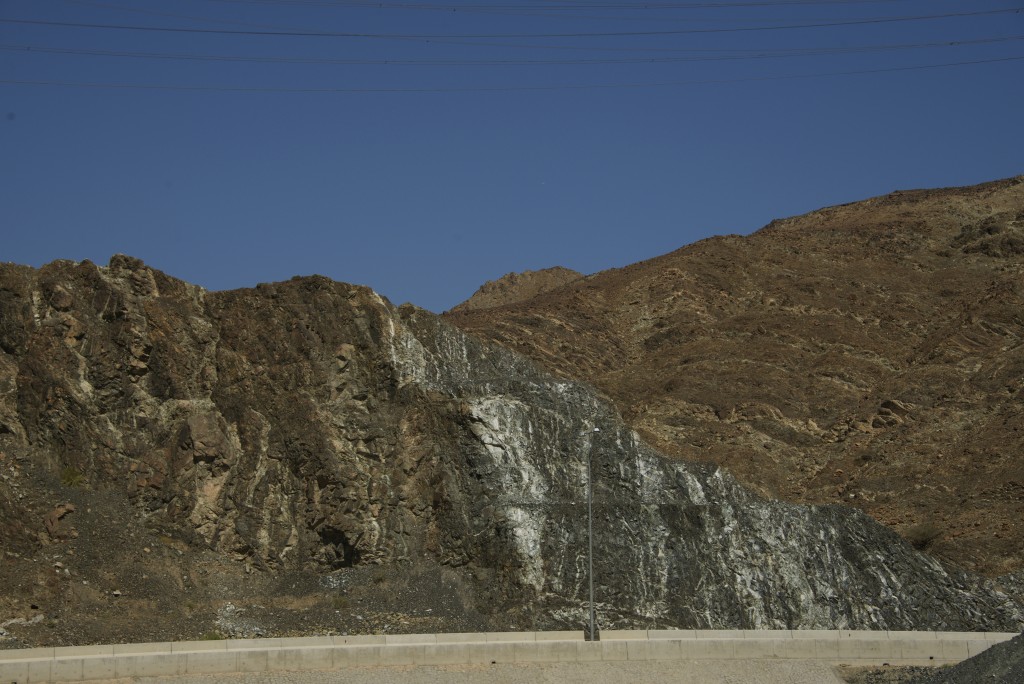
…some of the dykes are heavily altered. Oxygen isotopes of the sheeted dykes show that in some places seawater percolated all the way through the sheeted dyke complex.
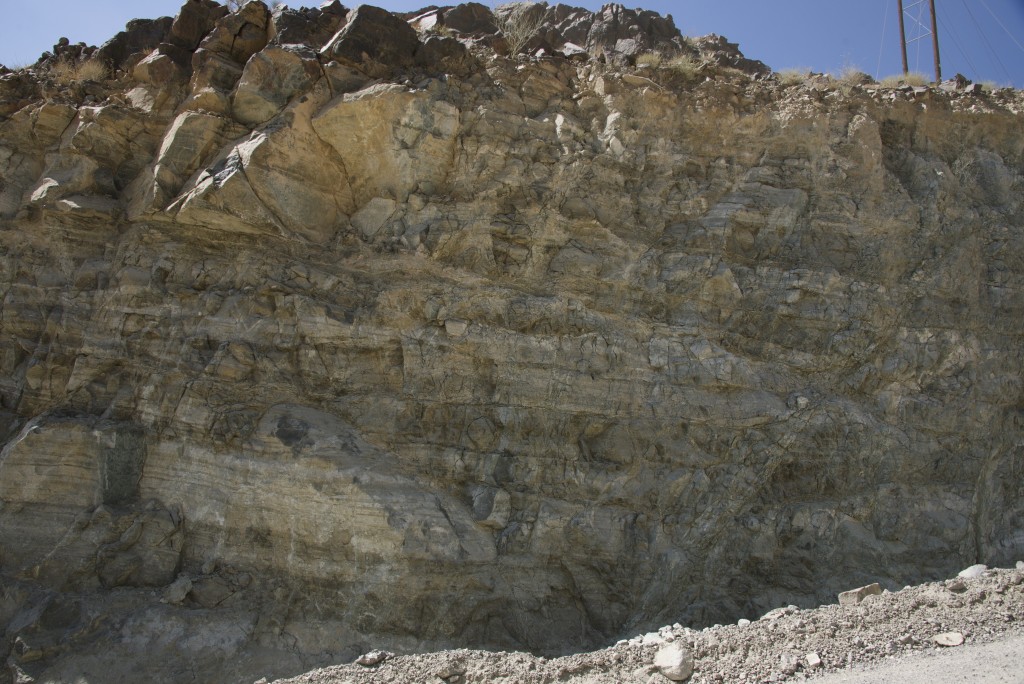
after the camel and beneath the sheeted dykes is the large gabbroic magma chamber that fed the dykes and pillow basalts. These gabbros are layered with cumulate minerals as the more bouyant mineralogies were tapped off the top leaving the cumulates behind…
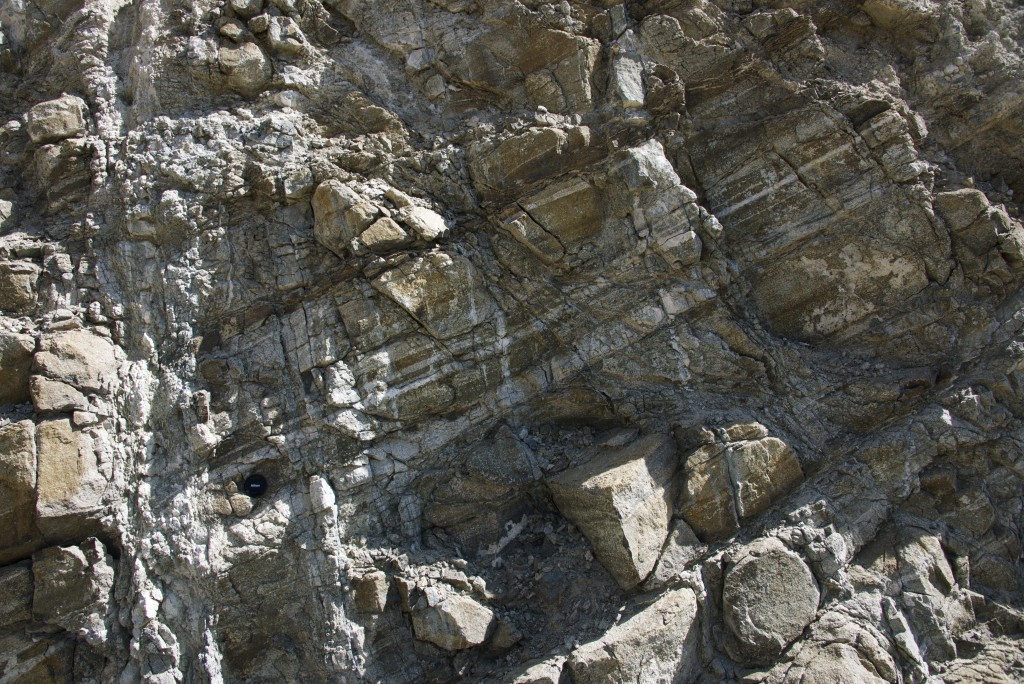
…however, it is argued that some of the layering is actually formed by magmatic flow. Some have even reported magmatic cross beds!
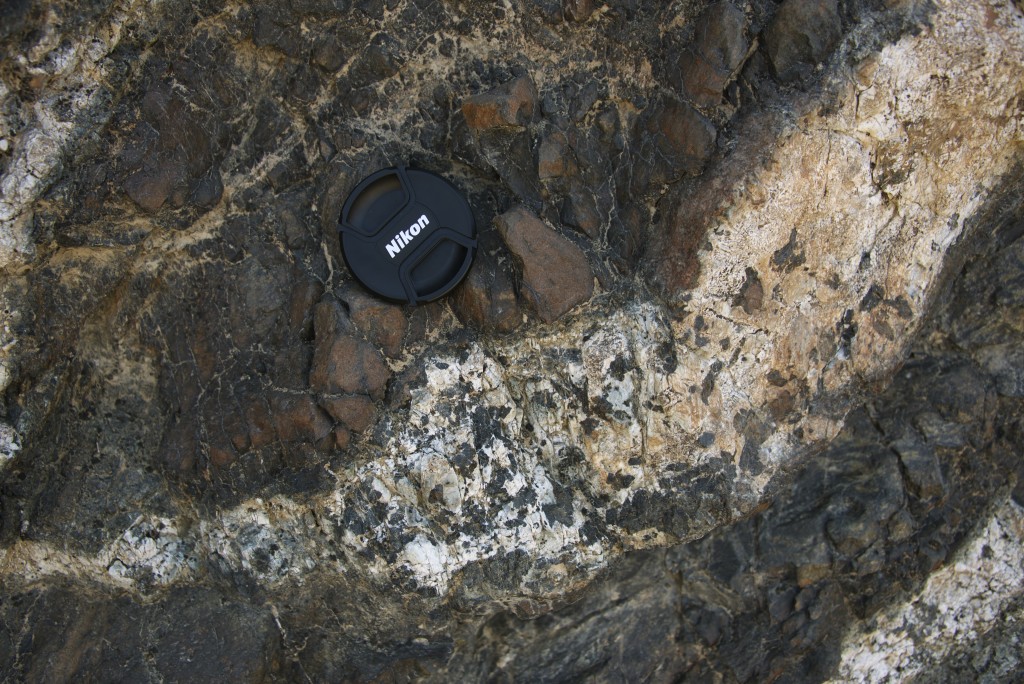
This melt pod shows a very sharp margin with the perioditite with very little chemical interaction with the host harzburgite.
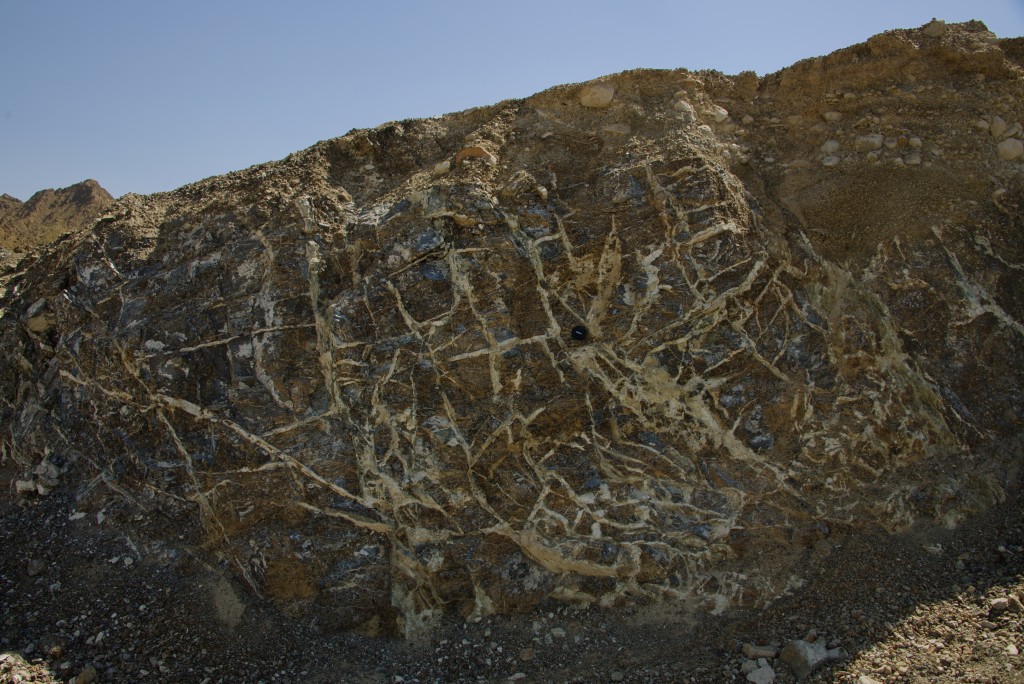
In other places, there are significant podiform chromitite deposits with rhodingite alteration veins.
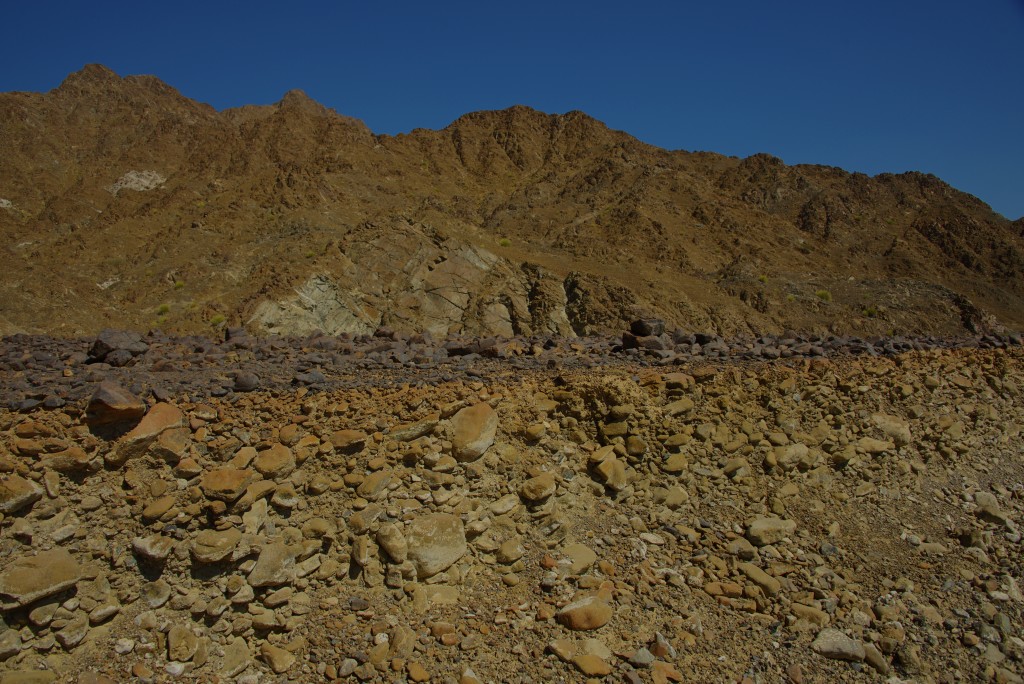
The desert can be harsh on the rocks. These harzburgite cobbles are coated on one side with purple desert varnish that extends a few millimeters beneath the surface. This was along a road cut to a chromite mine.
![]() This work is licensed under a Creative Commons Attribution-NonCommercial-ShareAlike 4.0 International License.
This work is licensed under a Creative Commons Attribution-NonCommercial-ShareAlike 4.0 International License.


